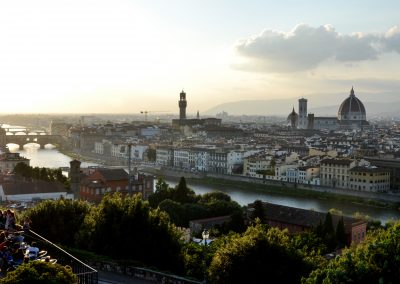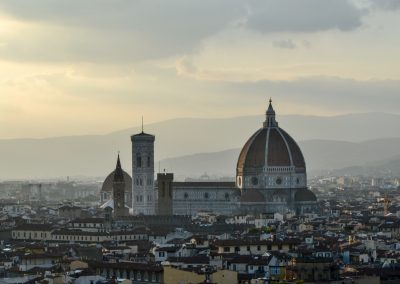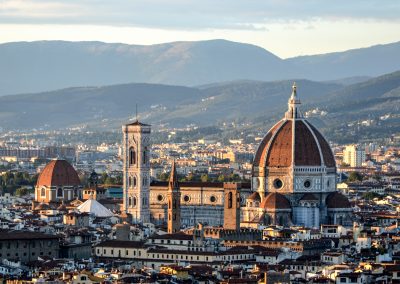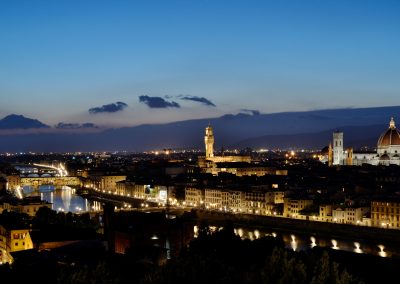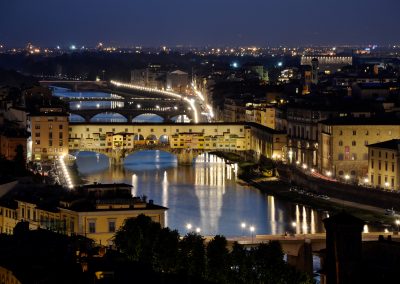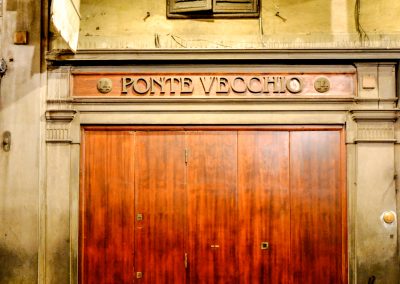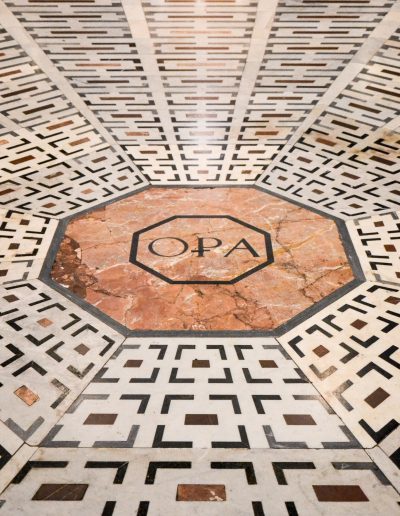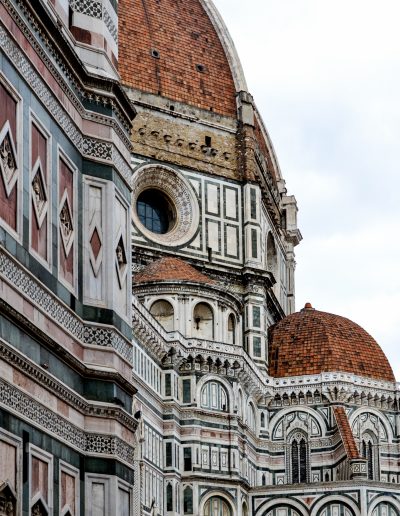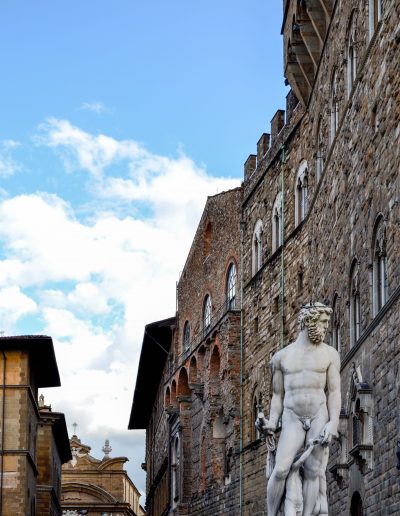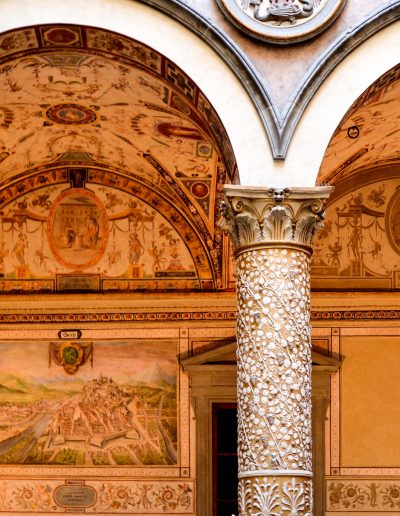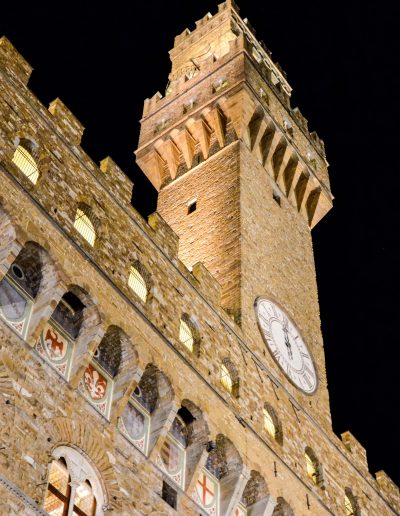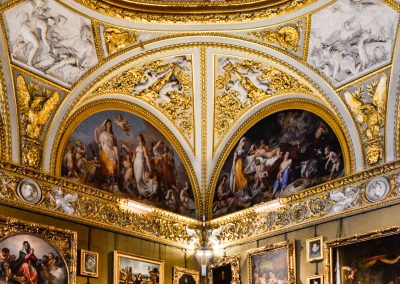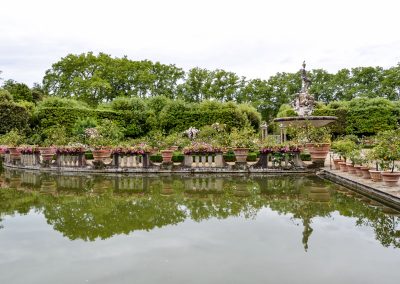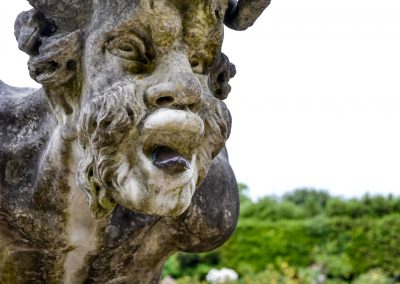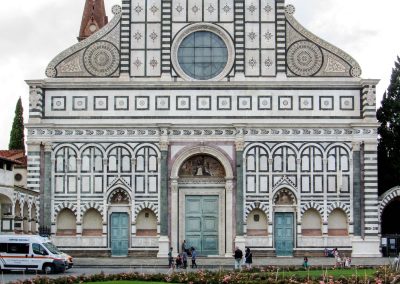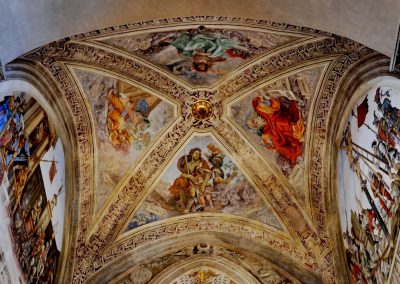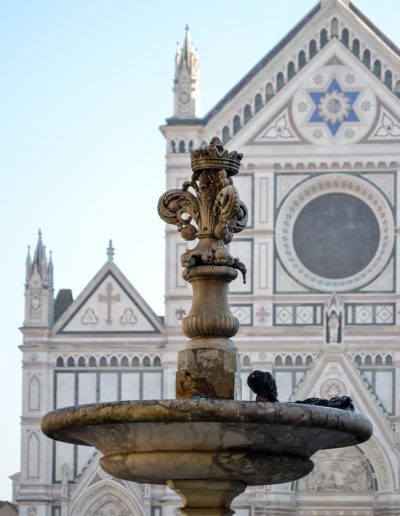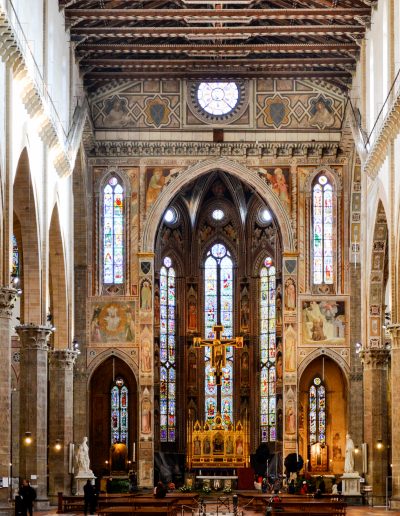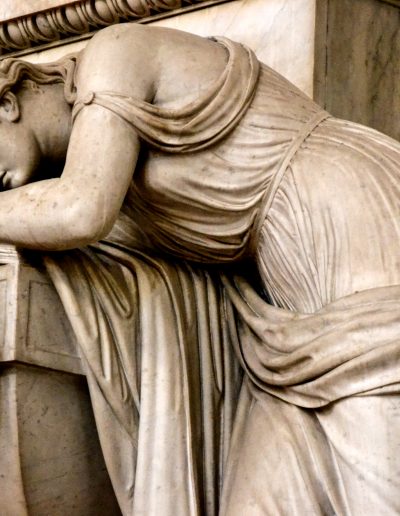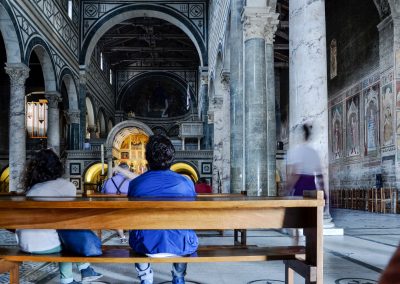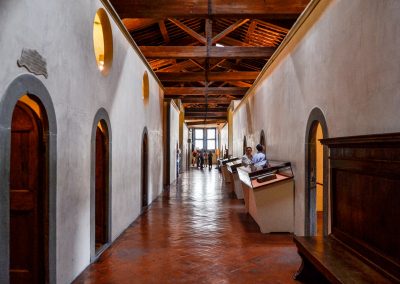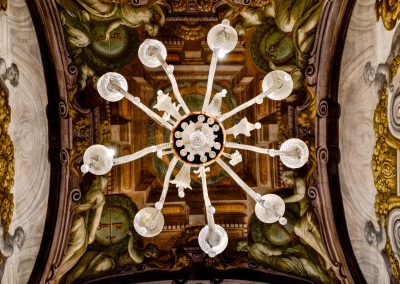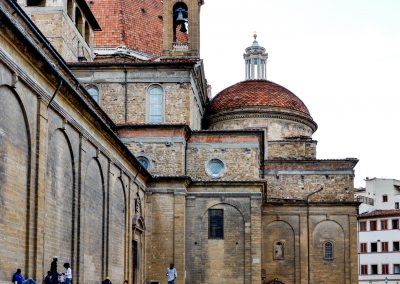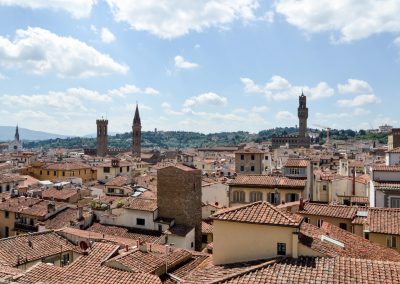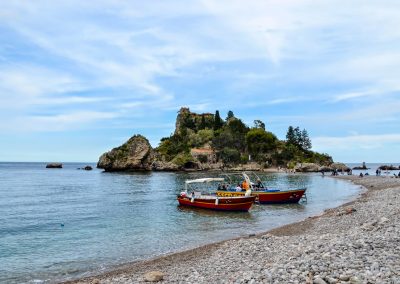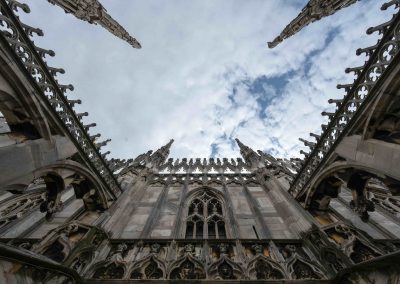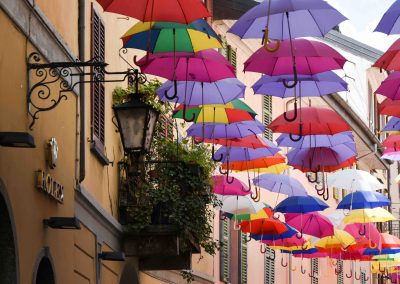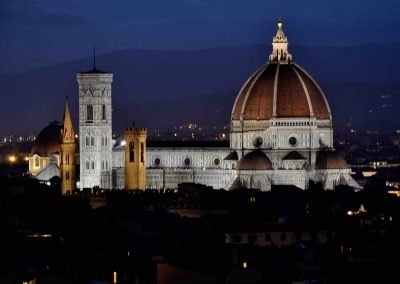As you may know, I did Erasmus in Florence, having spent ten months between 2013 and 2014 in the Tuscan capital. At the time, the blog was another, where I documented my day to day, my visits today to this Palazzo, tomorrow to another. Today I decided to compile here all the must-see places in Florence, obviously accompanied by beautiful photographs that I took throughout the year and some useful information! Buon viaggio!
Piazzale Michelangelo
One of the must-see places, the best view of Florence at any time of the day! To get there, it’s a good climb from Porta de San Nicoló or through Giardino delle Rose. If your legs are not what they used to be, there is always a taxi ready to take you to the top of the hill! From here you can see the Arno River, the Ponte Vecchio, the Palazzo Vecchio, the Duomo and the whole city up to the mountains that surround it. At the top you will find souvenirs, food and even live music. There you also find one of Michelangelo’s David copy.
Ponte Vecchio and Arno River
Like the Duomo, Ponte Vecchio is one of Florence’s landmarks! It is so beautiful and different that even when the Germans bombed the city, they had Hitler’s direct instruction to save it – truth or lack of aim, we are thankful for it! The bridge as we see now, dates from the 14th century and has a series of small shops, mostly jewelers, along the bridge – only in the center do we see the river again, almost making us forget that we are crossing it! Above us passes the Vasari Corridor, which connects Palazzo Vecchio to Palazzo Pitti, crossing the Uffizi, the Bridge and the Church of Santa Felicita. This corridor was built in 1565 by the Medici family so that the Duke, in power, could cross from his home to his place of work, without having to face the population that made him feel threatened. At the time, the bridge housed the meat market, which was relocated so that the Duke would not have to smell it. In the Church the corridor opened on a balcony, so that the family in power could attend Mass without also having to mix with the people.
Cathedral of Santa Maria dei Fiori, Dome, Giotto Bell Tower, Baptistry of San Giovanni, Crypt and Museum of the Work of Duomo
Why do I put all these names in the title? Because the Duomo is all of this! In the same square we have the beautiful church in three different marbles – white, pink and green -, the Bell Tower, the Baptistry and even the Museum. With the exception of the church, which is free to access, everything else is paid for, in a single ticket, valid for 72 hours, to allow you to visit everything with no rush and to have time to recover the legs from the hundreds of steps, which can be purchased online or at the Museum. Please note that neither the climb to the Dome (463 steps) nor the Belfry (414 steps) has an elevator.
The Cathedral is the third largest in the world, built between the 13th and 15th centuries! Inside the dome we see Giorgio Vasari’s incredible interpretation of the Last Judgment. Access to the crypt is via the cathedral. Here we can find traces of an older church, built in the same place, dedicated to Santa Reparata, which the current cathedral has replaced. Access to the dome is via the exterior of the church, via Porta della Mandorla, on the north side. The method of construction of the dome, by Filippo Brunelleschi, is a pearl of architecture, a double wall, the inside with more than two meters thick that supports itself, the outside an extra protection from winds and rain . The access to the top is through the middle of these “two domes”, with a 360º view of the whole city at a height of about 90m.
The Baptistery is one of the most incredible buildings I have ever visited. Originally there was a small chapel from the times of Roman Florence, built somewhere between the 3rd and 4th centuries. What we find today is an octagonal building, with white Carrara and green Prato marble, but the most interesting is the interior of its dome, also this octagonal, the largest dome in the world built with golden mosaics. While we are inside it is impossible that our eyes are not always attracted to the ceiling! The doors of the Baptistry are themselves masterpieces, especially the door facing east, which Michelangelo called “Doors of Paradise”, with ten large gilded panels carved by Ghiberti.
Giotto’s Bell Tower is the most eloquent example of Fiorentine Gothic in the 14th century. It is also considered the most beautiful bell tower in Italy, although it was built more for decorative reasons than practical ones. Five meters lower than the Duomo, it also has incredible views of the city, with the Cathedral included in the photograph.
Many of the works of art of all these buildings are in the Museum of the Work of the Duomo, in order to a better conservation.
Piazza della Signoria, Palazzo Vecchio and Gallerie degli Uffizi
Those who do not visit Piazza della Signoria cannot say that they have visited Florence. This square houses some important statues such as that of Cosimo di Medici on horseback, the Neptune fountain, the Loggia dei Lanzi, with several statues, and another copy of Michelangelo’s David, replacing the place where the original was until 1873. It is also here that you can find the famous Palazzo Vecchio.
This “palace” was not always called that. It was formerly known as Palazzo della Signoria, with Signoria being the main organism of the Florence Republic. In 1565 the name was changed, when the court of the Duke of Cosimo was transferred to the “new” Palazzo Pitti, changing the previous one to Vecchio. Here we can now find the perfecture of the municipality of Florence and a beautiful museum. The façade includes Arnolfo Tower, as high or higher than the Duomo, and with the different coat of arms of Florence in the 14th century. The palace has three patios, the second of which is the Customs (Dogana), where the ticket office is located. As soon as we enter the museum we find the wonderful Salone del Cinquecento, with frescoes and tapestries on the walls and a shiny ceiling painted by Vasari, with 29 panels representing the life of the Medici family and the city of Florence, separated by golden beams. During the six years that Florence was the capital of Italy, between 1865 and 1871, it was in this room that the parliament met. The rest of the museum has many wonderful rooms and chapels, with breathtaking ceilings and walls and the map room, my favorite!
Between the square and the Arno we find the Gallerie degli Uffizi, the largest art museum in Florence and one of the most famous in the world. Divided into several rooms arranged by schools and styles, the museum displays works from the 12th to the 18th centuries, with the world’s best collection of works from the Renaissance. Works by artists such as Cimabue, Caravaggio, Leonardo da Vinci, Michelangelo, Rafael, Ticiano, Peter Paul Rubens, Rembrandt and Sandro Botticelli can be seen there.
Palazzo Pitti and Boboli Gardens
The biggest attraction on the south bank of the river. The Palazzo Pitti. The present appearance of the palace dates from the 17th century and was originally designed by Filippo Brunelleschi as an urban residence for Luca Pitti, a Florentine banker. It was purchased in 1539 by the Medici Family, to serve as the official residence of the Grand Dukes of Tuscany. At the beginning of the 20th century, the Pitti Palace, along with its content, was donated to the Italian people by Vittorio Emanuelle III; for this reason, its doors were opened to the public and became one of the largest art galleries in Florence, hosting the Palatine Gallery, with Renaissance paintings; the Royal Apartments, a set of 14 rooms, formally used by the Medici family and their successors; the Gallery of Modern Art includes works by artists from the Macchiaioli movement and other modern Italian schools from the late 19th and early 20th centuries (in Italy, the term “Modern Art” refers to the period before World War II, being the art of the period that followed, generally known as “Contemporary Art”); the Silver Museum contains a collection of valuable silver pieces, works in semi-precious gems and antique jewellery, belonging to the Lorenzo di Medici collection; the Porcelain Museum, installed at the Casino del Cavaliere, in the Boboli Gardens; and the Costume Museum, which contains a collection of theatrical costumes dating from the 16th century to the present and is also the only museum in Italy to detail the history of Italian fashion.
Behind the Palace we find the wonderful Boboli Gardens, designed by the Medici family who thus created the “Italian garden” style. The garden itself could be considered one of the palace’s museums, considering all the Renaissance statues, decorated grottos and huge fountains that are found there!
There are two types of ticket, the first includes the Palace building, with all museums and the second the entrance to the Boboli Gardens, which also have access to the gardens of the neighboring Villa Bardini, with excellent views over Florence.
Church of Santa Maria Novella
During my stay in Florence and as a student of architecture almost all tourist attractions were open access as Italy gives special access to students of History of Art and Architecture. Unfortunately the visit to the church of Santa Maria Novella, near the station with the same name, was one of the exceptions and precisely this one that for me is the most beautiful! Of note are the frescoes behind the altar and the marble altar itself in various colors! The cloister is also well worth a visit!
Church of Santa Croce
The Church of Santa Croce is the largest Franciscan church in the world and the authentic pantheon of Florence – the church houses almost 300 tombs, including those of Michelangelo and Galileo Galilei. It is located in the square with the same name, which hosts various events throughout the year, such as the Christmas Market or the Calcio Storico di Firenze. The visit includes the church, the cloister, the Pazzi chapel and the view of the belfry. The church is not as spectacular as Santa Maria Novella, but the square is one of the most important in Florence, especially as a meeting place.
Church of San Miniato al Monte
A little further up from Piezzale Michelangelo we find San Miniato al Monte, one of my favorite places in Florence. With free entry and wonderful views of the city, it’s another must-see! The wooden ceiling, the semi-golden mosaic dome, the three worship floors, all visible from the middle one, the light! I think this is my favorite church in Florence after all, since it’s free!
As you can imagine, Florence is an endless world of culture! There are more museums worth visiting, such as Palazzo del Bargello, which houses some of the most interesting sculptures in Florence, the Museo di San Marco, an old Franciscan convent whose interest is the building itself or the Palazzo Medici Riccardi, the first Medici residence in Florence. There is also the Basilica di San Lorenzo, which also includes the Medici Chapels, where photography is prohibited, or the beautiful church of Orsanmichele that occupies the place of an old market. Where they also do not let taking pictures is in the Galleria dell’Academia where the original Michelangelo’s David is found, among other works. Another of the most interesting places in Florence for a lunch or a glass at the end of the day is Piazza Santo Spirito, in Oltrarno.
Finally, you should absolutely visit Gelataria La Carraia, next to the bridge with the same name, on the south bank of the river. For me the best flavour is Yogurt with Nutella! The day I return to Florence, it will be the first place I will visit for sure!
If you liked this post and want to read more about my trips to Italy, you can visit the following posts:


